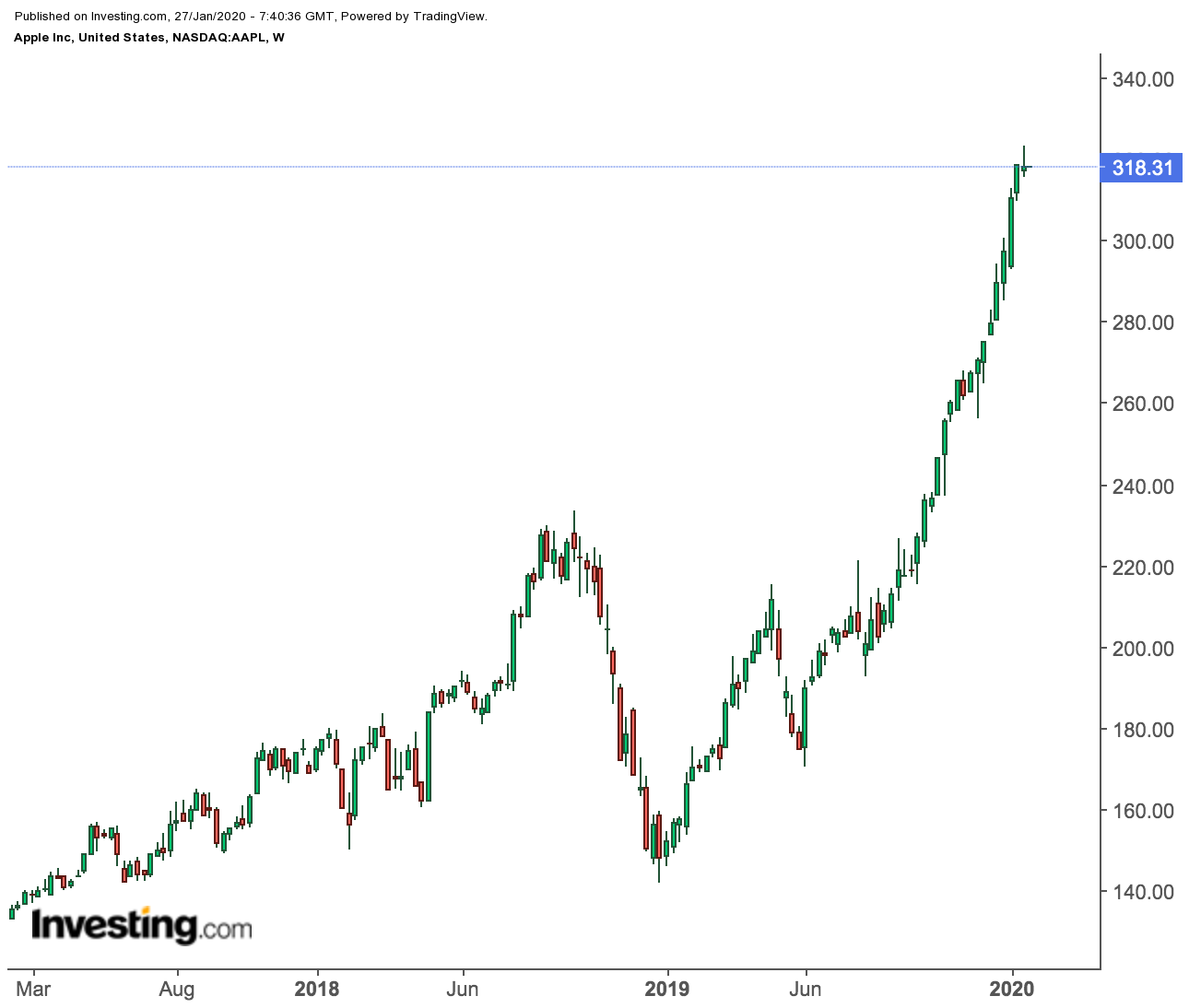* Reports Q1 2020 results on Tuesday, Jan. 28, after the close
* Revenue expectation: $88.38B
* EPS expectation: $4.54
No other earnings report is as important to investors as the one which the iPhone maker Apple (NASDAQ:AAPL) will release on Tuesday evening. The reason: the meteoric gains of Apple's shares provided much of the fuel for the U.S. market’s strong rally during the past year.
After more than doubling in value, Apple is now priced to perfection, leaving no margin for the company to disappoint. The rally of the past 12 months has been so powerful that it added over $725 billion to the company’s market capitalization, taking it to about $1.4 trillion. The stock closed Friday at $318.31, only slightly lower than its record high of $323.33.
Driving this extreme optimism is hope that Apple’s iPhone business remains robust and will get another boost when the company releases its 5G models, currently expected in September 2020, which will allow consumers to have a much faster connection speed and help iPhone shipments see growth for the first time in two years.
With the prospects for expanding iPhone sales looking strong after 5G technology, the fast-increasing revenue from Apple’s AirPods, smartwatches and services such as streaming-music subscriptions and mobile payments are also bolstering the belief that the company is succeeding in cutting its reliance on the more cyclical hardware business and is on the way to becoming a service company.
Growth in its services division last year helped Apple offset the 14% decline in its iPhone business. Indeed, sales from services are forecast to rise to $54 billion in fiscal 2020 and account for a fifth of total sales, up from 18% at the end of 2019, according to analyst data compiled by Bloomberg.
Apple’s Valuation Leaps
With growth for iPhones reviving and Apple’s services operations showing strong expansion, investors have become confident about future prospects. For the first time since 2011, the iPhone maker's shares have been trading at a higher price-to-earnings ratio than the S&P 500.
Apple is trading at 27 times last year’s earnings, the highest level since 2008. That compares with a multiple of 24 for the S&P 500. Apple’s persistent strength shows that investors have started to ignore the bearish scenario recommending investors avoid the company because its growth is too dependent on iPhones. The flagship product still contributes about half of total sales, making the business vulnerable to a shift in consumer preferences and a potential slowdown in economic activity.
In addition to these growth drivers, the macro environment, which became hostile last year following the U.S.-China trade spat and the growing risk of recession, is improving fast. The stock market is rising, volatility is low, and employment is growing.
The U.S. Federal Reserve is firmly on the sidelines and it seems unlikely that President Donald Trump would purposely cause any market shocks in an election year. This positive backdrop is prompting consumers to spend more on gadgets globally. Apple’s iPhone sales in China, the company’s biggest foreign market, rose more than 18% last month, according to CNBC calculations.
Bottom Line
Apple’s push to expand its sales from services is clearly succeeding, while growth from iPhones is reviving. This powerful combination justifies the stock’s current valuation and its future growth potential. Any post earnings weakness, in our view, should be taken as a buying opportunity.
